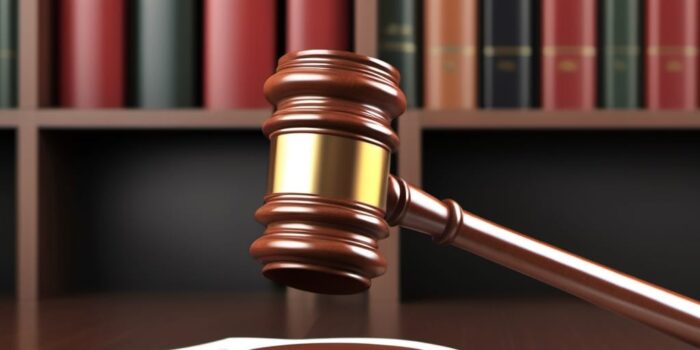Strict Liability is a legal concept that holds an individual or entity responsible for their actions or products, regardless of their intention or negligence. It is a fundamental principle in many areas of law, including tort law, criminal law, and product liability law. This article will delve into the complexities of this concept, providing a comprehensive understanding of its applications and implications.
The term ‘Strict Liability’ is derived from the Latin phrase ‘stricta liabilitas’, which translates to ‘strict responsibility’. It signifies a situation where the defendant is held liable for the damages or harm caused, irrespective of their intent or level of care. This principle is applied when the nature of the activity or product is inherently dangerous or has the potential to cause harm.
Origins of Strict Liability
The concept of strict liability has its roots in English Common Law. It was initially applied in cases involving inherently dangerous activities, such as the use of explosives or the keeping of wild animals. The rationale behind this was the recognition that certain activities pose a significant risk to others, and therefore, those who engage in such activities should be held accountable for any harm that results, regardless of their intent or precautions taken.
Over time, the application of strict liability has expanded to include other areas of law. For instance, in product liability law, manufacturers are held strictly liable for any harm caused by their products, regardless of whether they were negligent in their manufacturing process. This is based on the belief that manufacturers are in the best position to prevent harm and should bear the cost of any harm that occurs.
Strict Liability in Tort Law
In tort law, strict liability is applied in cases involving abnormally dangerous activities and defective products. The principle is that the person who causes harm should be held responsible, regardless of their intent or level of care. This is because such activities and products pose a significant risk to others, and it is only fair that those who engage in such activities or produce such products bear the cost of any harm that results.
For example, if a person owns a wild animal and it escapes and causes harm, the owner can be held strictly liable, regardless of the precautions they took to prevent the animal from escaping. Similarly, if a manufacturer produces a defective product that causes harm, they can be held strictly liable, even if they were not negligent in their manufacturing process.
Strict Liability in Criminal Law
Strict liability is also applied in criminal law, although its application is more limited. In criminal law, strict liability is used for certain offenses where the act itself is considered harmful, regardless of the intent of the person committing the act. These are typically minor offenses, such as traffic violations, where proving intent is not necessary for a conviction.
For instance, if a person is caught speeding, they can be convicted of a traffic offense, regardless of whether they intended to speed or were aware that they were speeding. The rationale behind this is that certain behaviors are considered harmful to society, and those who engage in such behaviors should be held accountable, regardless of their intent.
Principles of Strict Liability
There are several key principles that underpin the concept of strict liability. These principles help to define when and how strict liability is applied, and they provide a framework for understanding the rationale behind this legal concept.
Firstly, strict liability is based on the principle of responsibility. This means that individuals or entities are held responsible for their actions or products, regardless of their intent or level of care. This principle is rooted in the belief that those who engage in potentially harmful activities or produce potentially harmful products should bear the cost of any harm that results.
The Principle of Causation
The principle of causation is central to the concept of strict liability. This principle states that for a person to be held strictly liable, there must be a direct causal link between their action or product and the harm caused. In other words, the harm must be a direct result of the person’s action or product.
For example, if a person’s wild animal escapes and causes harm, the person can be held strictly liable because there is a direct causal link between their ownership of the wild animal and the harm caused. Similarly, if a manufacturer’s defective product causes harm, the manufacturer can be held strictly liable because there is a direct causal link between their product and the harm caused.
The Principle of Risk
The principle of risk is another key principle of strict liability. This principle states that those who engage in inherently risky activities or produce potentially harmful products should bear the risk of any harm that results. This is based on the belief that those who create a risk have a duty to manage that risk and should be held accountable if they fail to do so.
For instance, if a person chooses to engage in an inherently dangerous activity, such as the use of explosives, they are creating a risk of harm to others. Therefore, they should bear the risk of any harm that results, regardless of their intent or level of care. Similarly, if a manufacturer produces a potentially harmful product, they are creating a risk of harm to consumers. Therefore, they should bear the risk of any harm that results, regardless of their manufacturing process.
Implications of Strict Liability
The implications of strict liability are far-reaching and can have a significant impact on individuals and entities. On one hand, strict liability can provide a measure of protection for victims of harm, as it allows them to seek compensation without having to prove negligence or intent. On the other hand, it can place a heavy burden on those who engage in potentially harmful activities or produce potentially harmful products, as they can be held liable for any harm that results, regardless of their intent or level of care.
Furthermore, the application of strict liability can influence behavior. By holding individuals and entities accountable for their actions or products, regardless of their intent or level of care, strict liability can encourage them to take greater precautions to prevent harm. This can lead to safer practices and products, and ultimately, a reduction in harm.
Strict Liability and Insurance
Strict liability has significant implications for insurance. Since individuals and entities can be held liable for any harm that results from their actions or products, regardless of their intent or level of care, they often seek insurance to protect themselves from potential liability. This can lead to higher insurance premiums, especially for those who engage in inherently dangerous activities or produce potentially harmful products.
Moreover, insurance companies may be reluctant to provide coverage for activities or products that are subject to strict liability, due to the high risk of claims. This can limit the availability of insurance for such activities or products, and it can make it more difficult for individuals and entities to engage in these activities or produce these products.
Strict Liability and Regulation
Strict liability also has implications for regulation. By holding individuals and entities accountable for their actions or products, regardless of their intent or level of care, strict liability can serve as a powerful regulatory tool. It can encourage compliance with safety standards and regulations, as non-compliance can result in liability.
Furthermore, the threat of strict liability can deter individuals and entities from engaging in potentially harmful activities or producing potentially harmful products. This can lead to a reduction in harmful behaviors and products, and ultimately, a safer society.
Controversies Surrounding Strict Liability
While strict liability is a widely accepted legal principle, it is not without controversy. Critics argue that it is unfair to hold individuals and entities liable for harm that they did not intend to cause or could not have prevented. They contend that liability should be based on fault, not just causation.
Moreover, critics argue that strict liability can discourage innovation and risk-taking. By holding manufacturers strictly liable for any harm caused by their products, regardless of their manufacturing process, strict liability can deter manufacturers from developing new products for fear of potential liability. This can stifle innovation and limit the availability of new and potentially beneficial products.
Strict Liability and the Principle of Justice
Critics of strict liability often invoke the principle of justice, arguing that it is unjust to hold individuals and entities liable for harm that they did not intend to cause or could not have prevented. They contend that justice requires that liability be based on fault, not just causation.
Proponents of strict liability counter this argument by asserting that justice also requires that those who engage in potentially harmful activities or produce potentially harmful products bear the cost of any harm that results. They argue that this is a fair allocation of risk and responsibility, given the potential harm that these activities and products can cause.
Strict Liability and Innovation
Another controversy surrounding strict liability relates to its impact on innovation. Critics argue that by holding manufacturers strictly liable for any harm caused by their products, regardless of their manufacturing process, strict liability can deter manufacturers from developing new products for fear of potential liability. This can stifle innovation and limit the availability of new and potentially beneficial products.
Proponents of strict liability counter this argument by asserting that strict liability can actually spur innovation by encouraging manufacturers to develop safer products. They argue that by holding manufacturers accountable for the safety of their products, strict liability can incentivize them to invest in research and development to improve product safety.
Conclusion
Strict liability is a complex and multifaceted legal concept with far-reaching implications. It is a principle that holds individuals and entities responsible for their actions or products, regardless of their intent or level of care. While it can provide a measure of protection for victims of harm and serve as a powerful regulatory tool, it can also place a heavy burden on those who engage in potentially harmful activities or produce potentially harmful products.
Despite the controversies surrounding strict liability, it remains a fundamental principle in many areas of law. As our society continues to evolve and new risks emerge, the concept of strict liability will continue to play a crucial role in shaping our legal landscape and balancing the interests of individuals, entities, and society as a whole.
Consult with Clear Legal
Understanding strict liability can be challenging, but you don’t have to navigate it alone. Clear Legal is committed to providing you with exceptional legal guidance, grounded in our core values of ethics, innovation, and quality. If you’re facing a strict liability issue or simply seeking more information on how these laws may affect you or your business, we invite you to request a free consultation. Let us help you move forward with confidence and the support of a team that values your success as much as our own.





